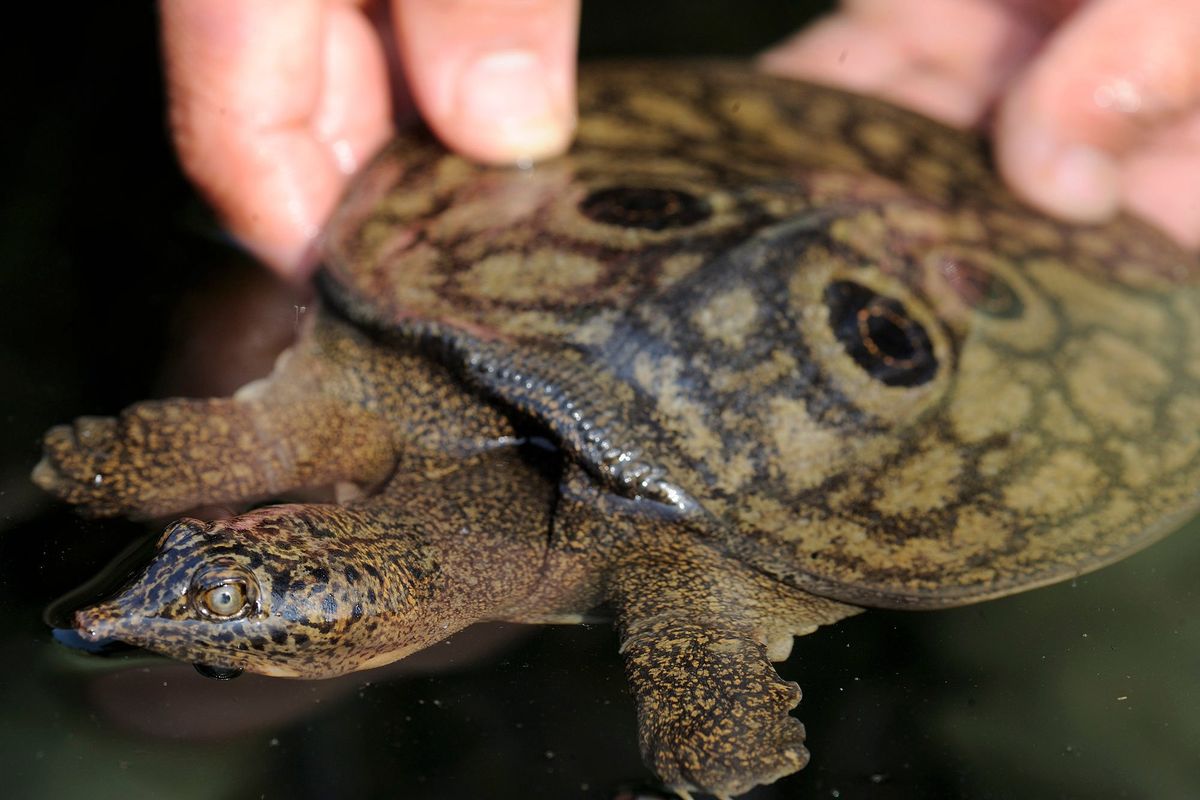Tiny bundles of hope: Critically endangered turtles hatch in Myanmar

Small miracles are popping out of the mud around Myanmar’s largest lake: Burmese peacock softshell turtles, just hatched from their eggs. For what may be the first time, humans were there to witness the birth of these rare creatures.
The hatchlings – little pancakes on surprisingly quick legs – emerged from a hole in the ground this month and began crawling to new lives in Indawgyi Lake. Their early steps were captured on video by U Nyein Chan and U Yae Aung, local staff members of the international wildlife charity Fauna & Flora.
The turtles were intercepted by Nyein Chan, a senior project officer; Yae Aung, a project assistant; and other colleagues who weighed, measured and released them.
The discovery is “exquisitely thrilling,” said Fredric Janzen, a biology professor at Michigan State University who specializes in softshell turtles but isn’t involved in this project.
The turtles, also called Nilssonia formosa, are critically endangered and found only in Myanmar. Their common name comes from black and orange spots on their shells, reminiscent of peacock feathers. Scientists know little about the animals.
“Nobody has done proper studies,” said U Zau Lunn, a program manager with Fauna & Flora in Myanmar. His team began working on conserving the Burmese peacock turtle last year. Zau Lunn said he and his staff were “very pleased” to have found eggs and hatchlings so soon.
He credits this early success to close collaboration with residents of the villages around Indawgyi Lake, a globally important ecosystem that provides habitat for threatened migratory birds as well. The lake and surrounding wetlands were designated a UNESCO Biosphere Reserve in 2017. Recently, Fauna & Flora gave money to people living on the lakeshore to form a team of “turtle guardians” and patrol the area to protect nesting sites.
In October, the community members and conservationists identified five turtle nests with about 20 eggs each and fenced them off, but they didn’t know the species of the eggs’ occupants until the babies began hatching in June. Now that they’re identified as Burmese peacock turtles, more research can begin. That the eggs incubated for nine months is already an unusual finding, Zau Lunn said. Other turtle species’ eggs, even in the Nilssonia genus, hatch after just two or three months.
“When you’re doing conservation work, you have to know something about the basic life history of the organism,” said Steven Platt, a herpetologist with the Wildlife Conservation Society, who is one of the few scientists who have researched the Burmese peacock turtle.
Just finding and describing nesting sites is valuable for conservation, said Platt, who isn’t involved in this project. “Those are all pieces of the puzzle that we’re slowly assembling. Unfortunately, we don’t have a lot of time, because these species are declining at such a rapid rate.”
The Indawgyi Lake turtle guardians protected these eggs, but threats to the species remain, including habitat loss, pollution, climate change, accidental catches by fishermen and hunting for subsistence or the international wildlife trade. About 40% of all turtle and tortoise species are threatened, according to the International Union for Conservation of Nature’s Red List. The number of Burmese peacock turtles is unknown, but scientists suspect their population declined by at least 80% over the past 90 years.
While adult turtles are mostly invulnerable to predators, few turtles survive from the egg and hatchling stages to adulthood, Platt said. That makes these Burmese peacock turtle babies all the more precious.
Janzen applauded the turtle guardians.
“This is the fruit of their labor,” he said.
Local collaboration is what makes conservation efforts succeed and last, Janzen said.
“If people have a stake in it, a joy, a passion, that’s going to make it sustainable.”
This article originally appeared in The New York Times.